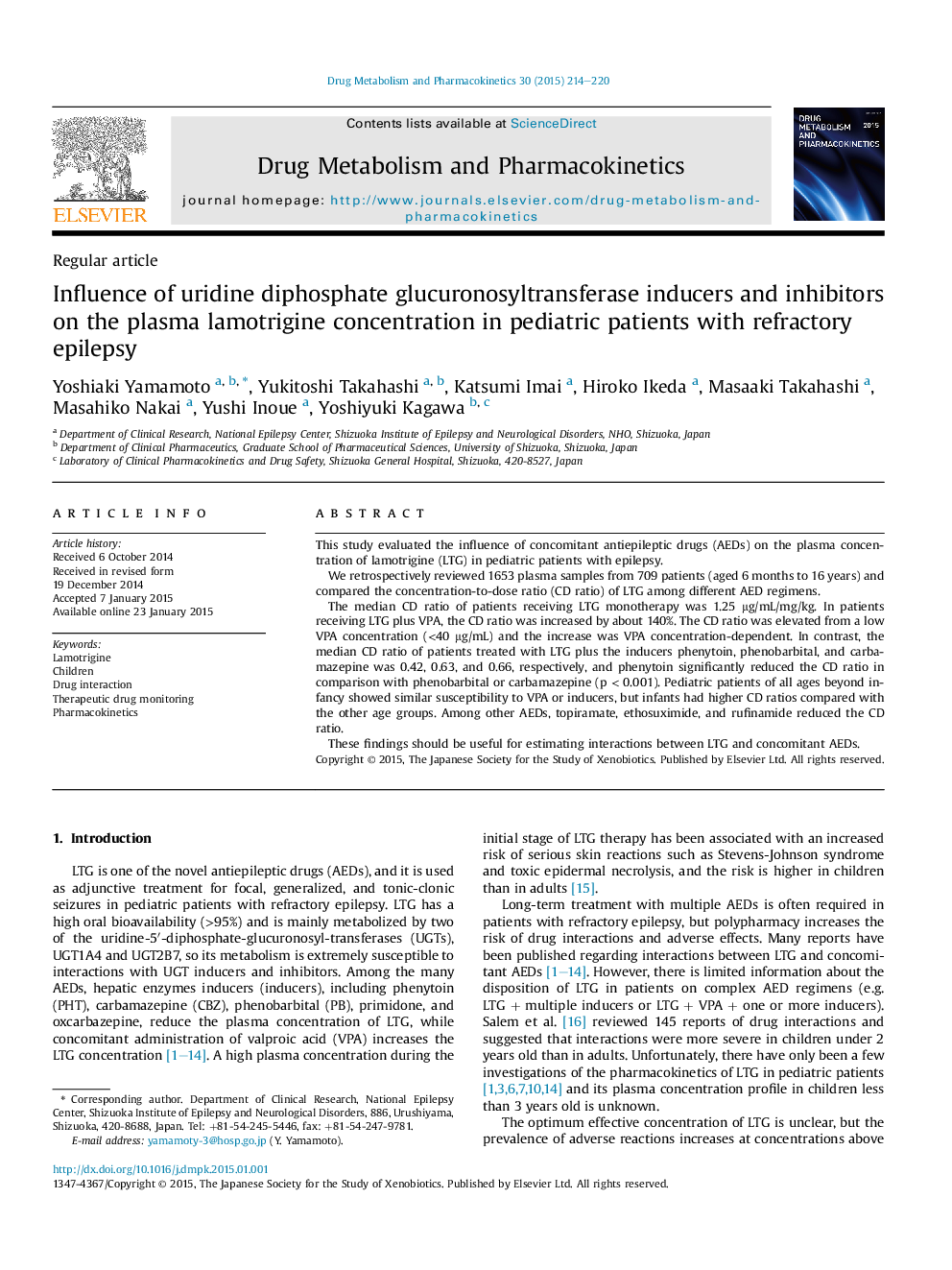| Article ID | Journal | Published Year | Pages | File Type |
|---|---|---|---|---|
| 2478946 | Drug Metabolism and Pharmacokinetics | 2015 | 7 Pages |
This study evaluated the influence of concomitant antiepileptic drugs (AEDs) on the plasma concentration of lamotrigine (LTG) in pediatric patients with epilepsy.We retrospectively reviewed 1653 plasma samples from 709 patients (aged 6 months to 16 years) and compared the concentration-to-dose ratio (CD ratio) of LTG among different AED regimens.The median CD ratio of patients receiving LTG monotherapy was 1.25 μg/mL/mg/kg. In patients receiving LTG plus VPA, the CD ratio was increased by about 140%. The CD ratio was elevated from a low VPA concentration (<40 μg/mL) and the increase was VPA concentration-dependent. In contrast, the median CD ratio of patients treated with LTG plus the inducers phenytoin, phenobarbital, and carbamazepine was 0.42, 0.63, and 0.66, respectively, and phenytoin significantly reduced the CD ratio in comparison with phenobarbital or carbamazepine (p < 0.001). Pediatric patients of all ages beyond infancy showed similar susceptibility to VPA or inducers, but infants had higher CD ratios compared with the other age groups. Among other AEDs, topiramate, ethosuximide, and rufinamide reduced the CD ratio.These findings should be useful for estimating interactions between LTG and concomitant AEDs.
